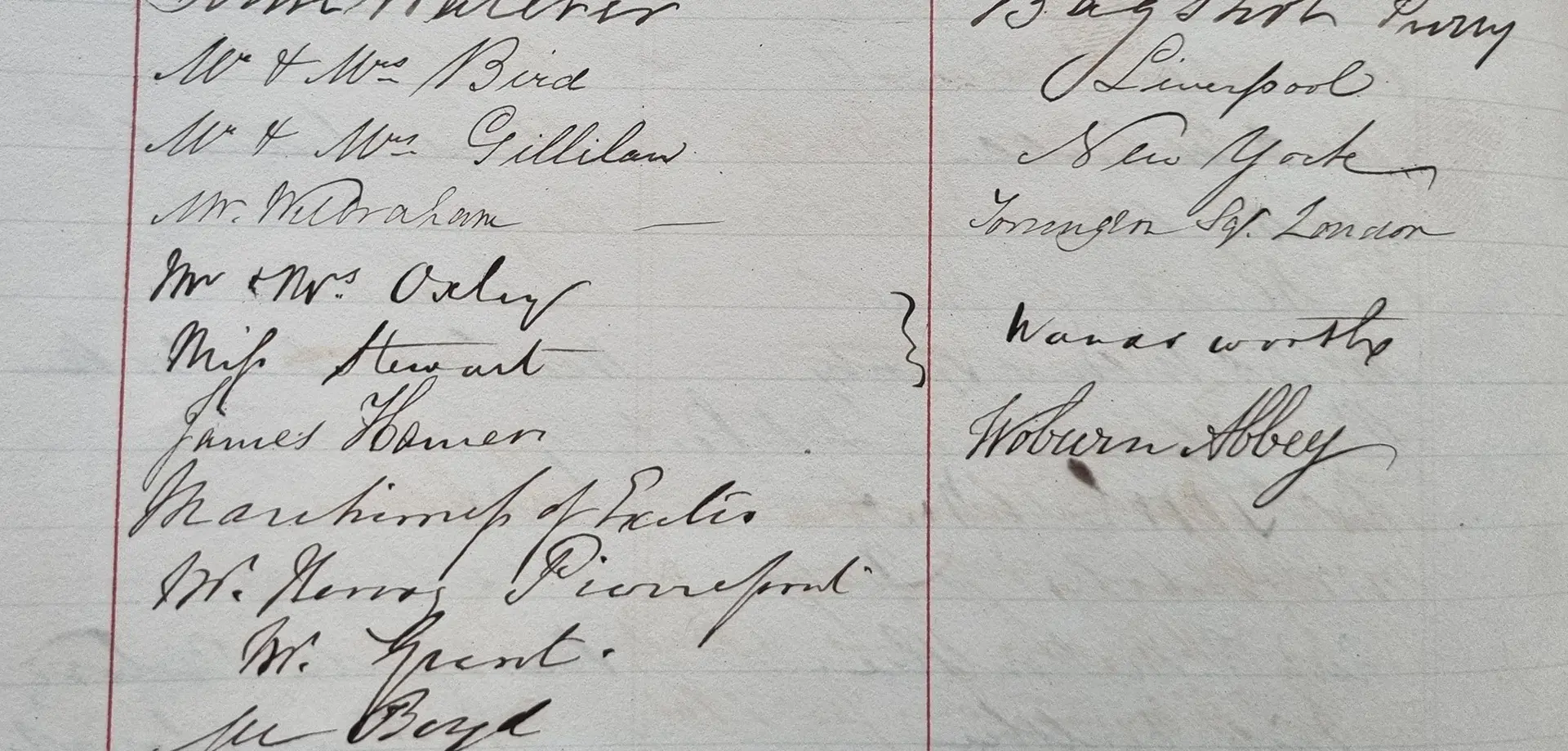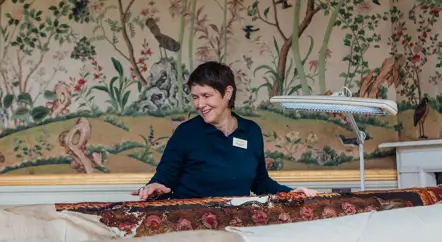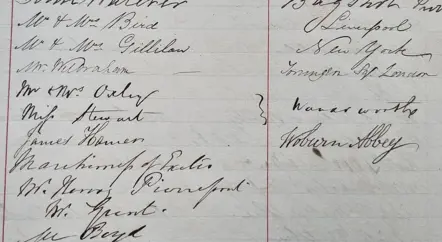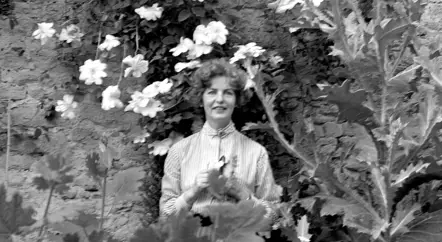Collections and Archives Assistant Ian Gregory reports on a 19th-century visitor to Chatsworth
28 August 1844 was a busy day at Chatsworth. It fills a whole page of the Visitors’ Book for that year. One visitor, James Homer, gave his place of origin as Woburn Abbey. This was and is an important country house.
The original abbey at Woburn was founded by Cistercians in 1145. Of course it was dissolved by Henry VIII. The site was later acquired by the Dukes of Bedford. They built a house on the site of the ruined abbey in 1630. From 1747-1761 this house was remodelled by Henry Flitcroft and John Sanderson, for the 4th Duke of Bedford. In 1786 two future presidents of the United States, John Adams and Thomas Jefferson, visited Woburn Abbey. Adams described it as beautiful, but disapproved of the ways in which it and other great houses were financed. The architectural style of Woburn is Classical. Ionic columns grace its white exterior.
When Homer arrived at Chatsworth, Woburn Abbey belonged to Francis Russell, 7th Duke of Bedford (1788-1861). Bedford was a good friend of the 6th Duke of Devonshire, having known him from childhood. They also had shared political views, both of them standing as Whig politicians. Bedford also had a younger brother, Lord John Russell, who served as Prime Minister from 1846-1852 and again from 1865-1866. Both terms were blighted by divisions within his cabinet and his party (he began as a Whig and then became a Liberal). His first administration was marked by the Great Famine in Ireland, a disaster that saw Ireland loose a quarter of its population to starvation or emigration. Russell’s government failed to cope with that catastrophe.
In more recent times, following World War II, many aristocratic families were hit hard by death duties, wartime privations and losses of sons and heirs. Dry rot was discovered at Woburn and as a result half of the building was demolished. When the 12th Duke died in 1953 his heir had to pay £14 million in death duties. There is a parallel here with what happened at Chatsworth when the 10th Duke of Devonshire passed away in 1950. Like Chatsworth, Woburn Abbey was opened to the public in an attempt to pay off the tax. As at Chatsworth the family managed to save their house.
Today Woburn Abbey is noted for a safari park and a fine collection of paintings. Animals in the park include white rhinos, Asian elephants, American bison, lions, Amur tigers and many more species. Paintings include works by Rembrandt, Gainsborough, Reynonds, Velazquez, Holbein, Pousson and others. The collection also features the ‘Armada Portrait of Queen Elizabeth I’ by an anonymous painter. This collection is considered one of the finest in private hands.
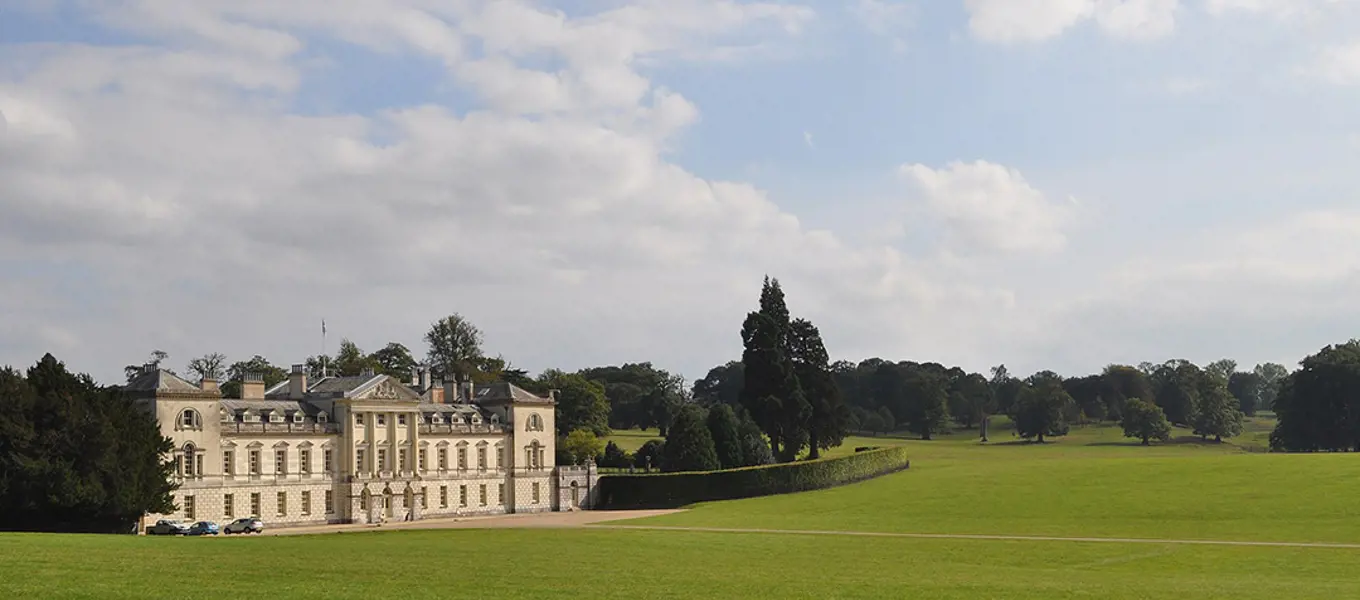
Woburn Abbey amidst its parkland, courtesy of Stevekeiretsu

